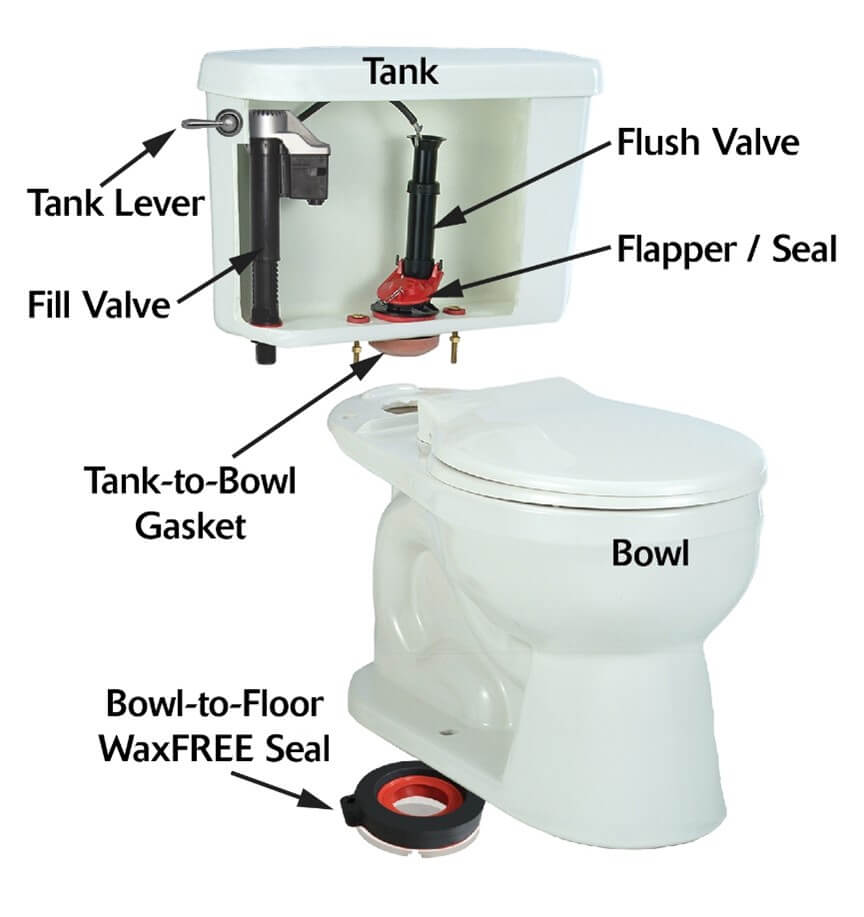Toilet leaks are one of the most common household water leaks and you may have one without even knowing. A leaking toilet can waste up to 300 gallons of water per hour making bills extremely costly! Emily and Brittany are City of Round Rock employees who have worked closely with water customers who have experienced all kinds of water leaks. They have great advice for customers who are experiencing or who might experience toilet leaks.
Emily: Most of my time working in the Water Conservation Program is dedicated to notifying customers of water leaks at their properties. Our courtesy leak alert program is intended to help customers be aware of water leaks before they are surprised by a high bill. I monitor customer usage through our water metering software which detects continuously flowing water for over 24 hours. This means I can see who possibly has a water leak at their property. It is still important to take responsibility over your own water usage and always keep an eye out for leaks. You can do this by viewing your daily and hourly water use though the customer portal at RRTXWATER.COM
Over the years, I’ve had interesting conversations with customers that have had toilet leaks. One time, I called a customer to notify of continuous water use and he immediately started checking all around his house while telling me he does not see any water leaking anywhere. Finally, he went into a guest bedroom bathroom that is mostly never used and I immediately heard water flowing over the phone! It is common for toilet leaks to go unnoticed in bathrooms that rarely get used. Another instance was when someone told me that they have heard their toilet making a flowing water noise for a while, but they did not know that it meant it was leaking. Although I get these responses quite often, finding a leaking toilet by just listening is not always the case.
Brittany: I’ve found the most common misconception related to toilet leaks is thinking that you’ll know if your toilet is leaking because you’ll be able to hear it. While water flow constantly running may be loud enough to hear from another room, most running toilets are not audible. You’ll need to do the plumber recommended dye test to know if your toilet has a leak. Dye tests are a quick and easy DIY solution to figuring out if your toilet has a leak. Dye tablets are available for free to City of Round Rock water customers in the Utility Billing lobby at City Hall, or you can use food coloring from your pantry. I’ve heard customers use a Kool-Aid packet instead of a dye tablet or food coloring. Make a calendar event on your phone to check your toilets regularly for leaks – just because it’s not leaking today doesn’t mean there won’t be an issue in the future.
Sometimes toilet leaks are an intermittent issue, caused by a visiting family member or a sleepy kiddo when they flush the lever in a weird way and cause the flapper to not seal fully. In more extreme cases where a seal has completely degraded, toilet leaks can also mean constant water use running all day and night. The highest water bill I’ve ever seen that was directly related to a couple running toilets was nearly $600.00. That had to be nearly 24/7 water usage for an entire month! A copy of the plumbing invoice showed the issue was resolved for under $100.00 with a flapper and wax seal repair. It’s good to know there are affordable solutions for a potentially expensive problem.

Most Common Toilet Leaks:
- Worn Out Flapper– The flapper blocks water in the tank from entering the bowl, and if that part is worn out, it will cause water to continuously leak into your bowl. Old or worn-out toilet flappers (e.g., valve seal) can cause leaks. Flappers are inexpensive rubber parts that can build up with naturally occurring minerals in the water or decay over time. Replacing them can be a quick and easy fix.
- Flapper Chain– The chain could be too long and get stuck under the flapper, keeping it open and not able to close properly; or could get kinked and then would be too short, not allowing the flapper to close.
- Misadjusted Flush Valve Assembly– This will cause water to enter the overflow valve and continuously fill up in your tank.
- Loose or Worn-out Seal at the Base– If water is pooling up around the base of your toilet, then parts that bind your toilet to the floor can be worn out.
- Crack on the Tank or Bowl– Toilets are built to last, but cracks can develop over time. Oftentimes this will start has a hairline crack that develops into something more severe.
- Loose or Worn-out Tank-to-bowl Connections– The tank and bowl in two-piece toilets are bound together by a collection of gaskets, nuts, and bolts. If any of these parts come loose, a leak can develop at that area in the toilet.
- Water Supply Line, Shut Off Valve or Rusted Pipes– The pipes that lead to your toilet can rust over time. This can eventually create a crack in the pipe, which will allow water to leak around your toilet. The Water Shut off valve to the toilet (located most often behind your toilet near the wall) can also wear out over time or leak when turning water on and off. It’s a good idea to check the functionality of these valves a few times a year, and especially when you move in.

How to Change a Toilet Flapper: This is the most common toilet leak and the easiest to fix! You do not have to call a plumber and you do not have to spend money on expensive parts or tools.
Video: How to Replace a Toilet Flapper


